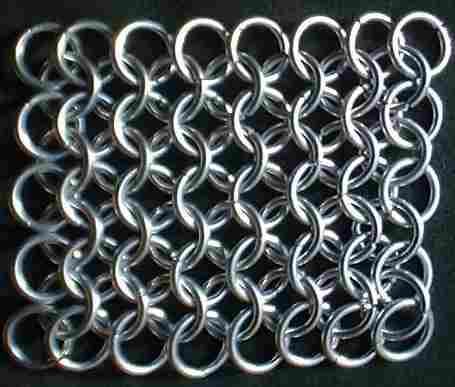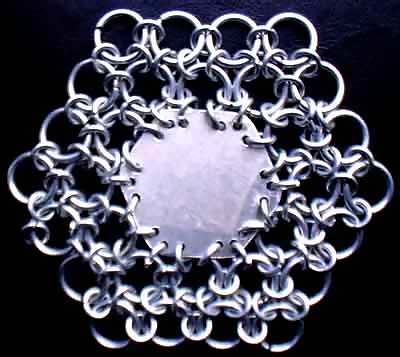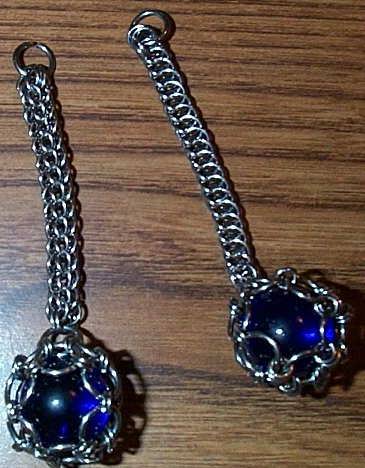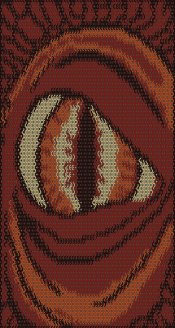A weave or pattern is the basic building block for chainmailling. It's a pattern that's formed from how the
rings link together. Some weaves combine other weaves or parts of other weaves. Modern day chainmail weaves tend to
fall into approximately six categories. Each category roughly groups different weaves based upon some common elements
such as how rings connect or how the rings lie in a plane or how they stack. Some categories include other categories
such as Orbital/Captive.
European
The European family consists of the weaves that were traditionally used for armor and jewelry across Europe
and the Middle East. European weaves typically have a flow that expands and contracts in one direction but not the other
with two sets of ring "planes" that lie in opposite planes.

Japanese
The Japanese family consists of the weaves that were used traditionally in Japan for armor and decoration.
Japanese weaves are characterized by the use of 90° ring connections, with horizontal rings joined by vertical
"connector" rings where the horizontal rings are usually much larger than the connector rings.

Persian
The Persian family is based on a "stacked" ring orientation. The name is misleading since there is no
historical evidence to support the use of these weaves in Persia at any time. Most of these weaves are modern creations.
The construction of Persian weaves is similar to European weaves except that the rings become stacked and form pairs of
rings, resulting in a different flow and a thicker, much tighter weave.

Hybrid
The Hybrid category contains weaves that don't fit into any of the other categories. Weaves that combine
techniques from more than one categories or can't be classified easily fall under Hybrid.

Orbital/Captive
Orbital/Captive weaves are defined by the use of rings that "orbit" other rings or are trapped within
them.

Spiral
The Spiral category is composed of weaves where the rings are linked in a helical fashion. Spiral weaves
were used historically in various parts of the world as jewelry. All spiral weaves have left and right handed
versions.

It's very hard to determine the total number of different weaves. New ones are being discovered every day by
chainmaillers. Maille Artisans International League
currently has over 500 weaves listed on their website.
Though not a separate class of weaves, inlays or variations on inlays can be done in all
weaves. An inlay is simply a group of rings, usually made into a pattern, of different colors or metals to form a
contrast with the rings around them. Inlays can get very intricate or be very simple. The dragon eye is an example
of an inlay created by the instructor. In this case the entire piece is an inlay of different color rings creating
a dragon eye.

This eBook will focus on seven common weaves:
- European 4-in-1
- Japanese 2-in-1
- Japanese 6-in-2
- Byzantine
- Half Persian 3-1
- Half Persian 4-1
- Full Persian
These weaves give a good overview of several different categories of weaves as well as letting you become
familiar with how to weave more than one type.
A weave's name can also give a hint about that weave. For example, when referring to certain European weaves,
a set of numbers can appear in their name. European 4-in-1 lets you know that every ring in the weave has four
others that it connects to. Japanese 6-in-2 means that one kind of ring will have six others attached to it while
another type will have two, all within the same weave.
Speed weaving is a term used when more than one ring is woven into a weave at a time. The instructions given for European 4-1 and most of the others are variations of speed weaving. Speed weaving usually involves one or
more closed rings on an open that's then woven into your project instead of weaving a single ring at a time. Even
though you'll still need the same amount of open and closed rings, speed weaving is much faster since at the time
of weaving you don't have to close every single ring, only those directly woven into the pattern.



